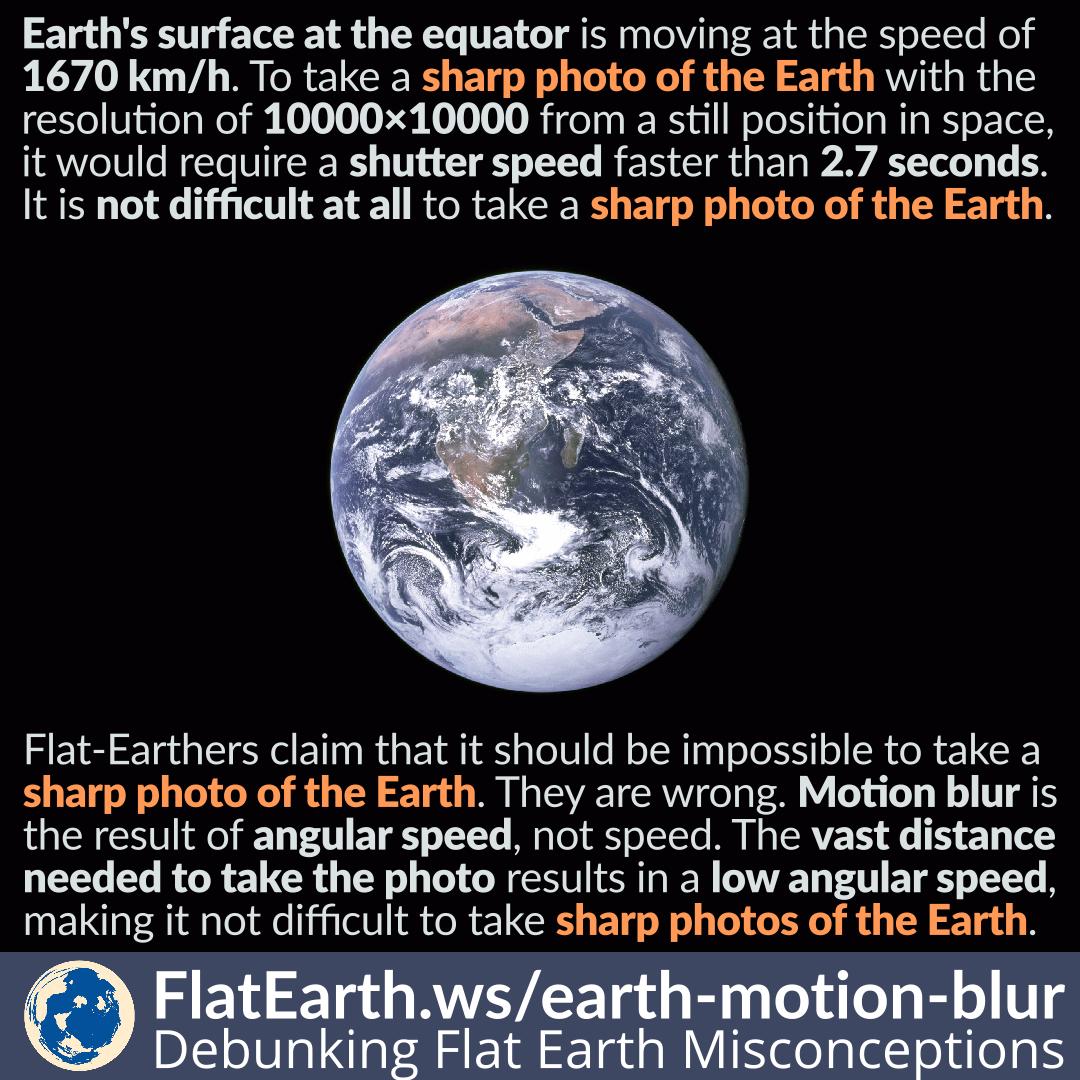The surface of the Earth close to the equator is moving at the speed of about 1670 km/h due to Earth’s rotation. To take a sharp picture of the Earth with the resolution of 10000×10000 from a stationary position in space, it would require the shutter speed faster than 2.7 seconds. It is not difficult at all to take a sharp picture of the entire Earth without perceivable motion blur.
Flat-Earthers claim that it should be impossible to take a sharp picture of the Earth from space due to the speed of Earth’s rotation. To them, the fact that a photographer cannot take a sharp photo of a speeding race car from the sidelines (they actually can) tells us it should be impossible to take a sharp picture of the Earth moving at 10× the speed.
They are wrong. Motion blur is caused by the angular speed of the object relative to the camera, not from its absolute speed. The vast distance required to take a photo of the Earth results in a very low angular speed, making it not difficult at all to take sharp images of the Earth.
A camera works by opening its shutter for a certain time to let light hit the sensor or film. Motion blurs occur if the shutter is open too long, and the object moves far enough during the time.
According to our calculation, with the parameters of:
- The resolution of the photo is 10000×10000 (100 megapixels)
- The Earth is taken entirely.
- The observer who takes the picture is in a stationary position in space.
then, the maximum shutter speed where motion blur does not occur is 2.7 seconds.
Calculation
We’ll assume we are going to take a picture of the Earth with the resolution of 10000×10000, far higher than any camera in the market when this article was written.
Earth’s diameter is 12742 km. If we were to take a picture of the Earth filling the entire frame, then from edge to edge is 12742 km, represented by 10000 pixels in the image. We can calculate a single pixel represents a maximum distance of 12742 km / 10000 pixel = 1.27 km/pixel.
Motion blur will not occur if the shutter speed is not longer than the time it takes for the Earth to move 1.27 km.
The Earth is moving at 1674 km/h close to the equator. Then the longest shutter speed required to keep the picture from having any blur due to Earth’s rotation is (1.27 km/pixel) / (1674 km/hour) = 2.7 seconds.
References
- Motion blur – Wikipedia


